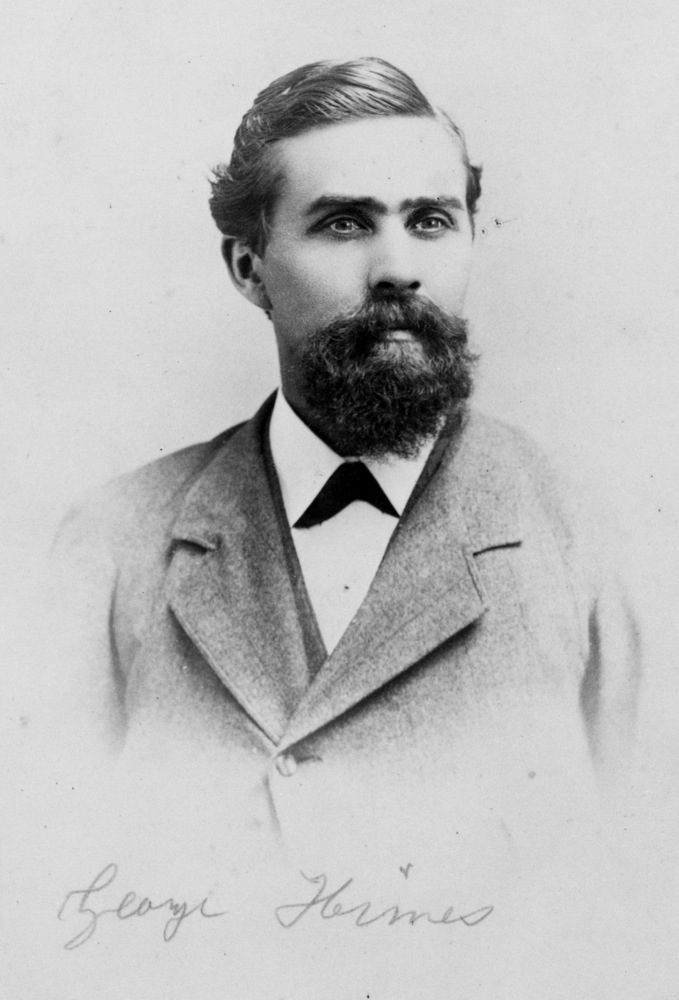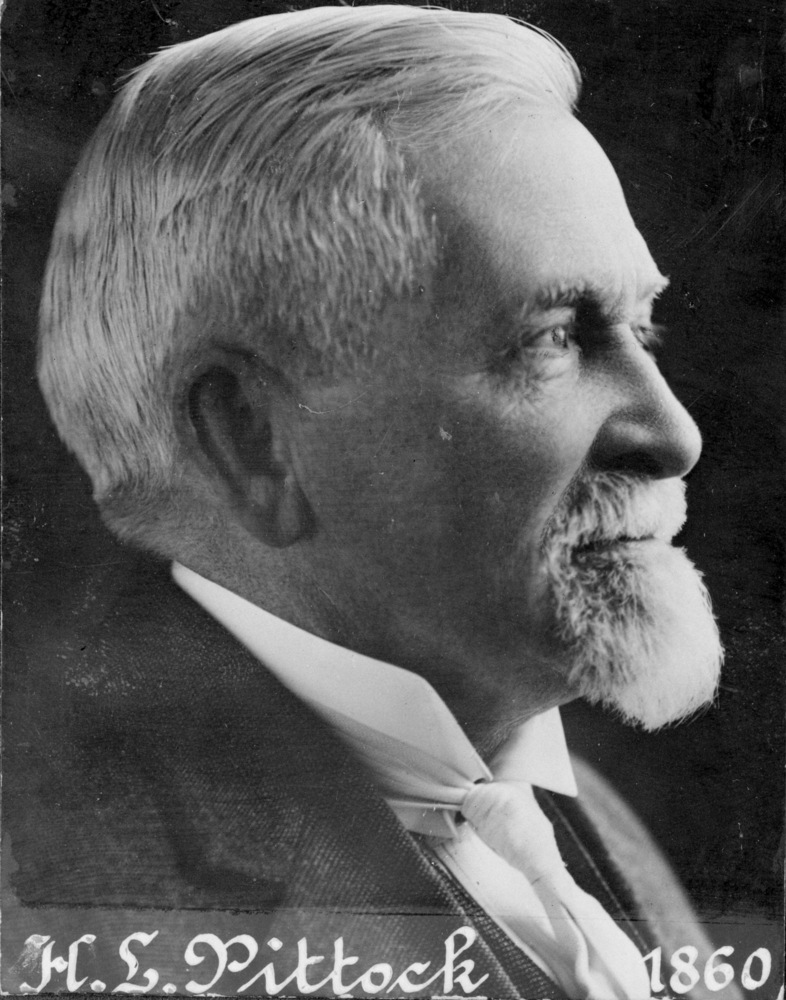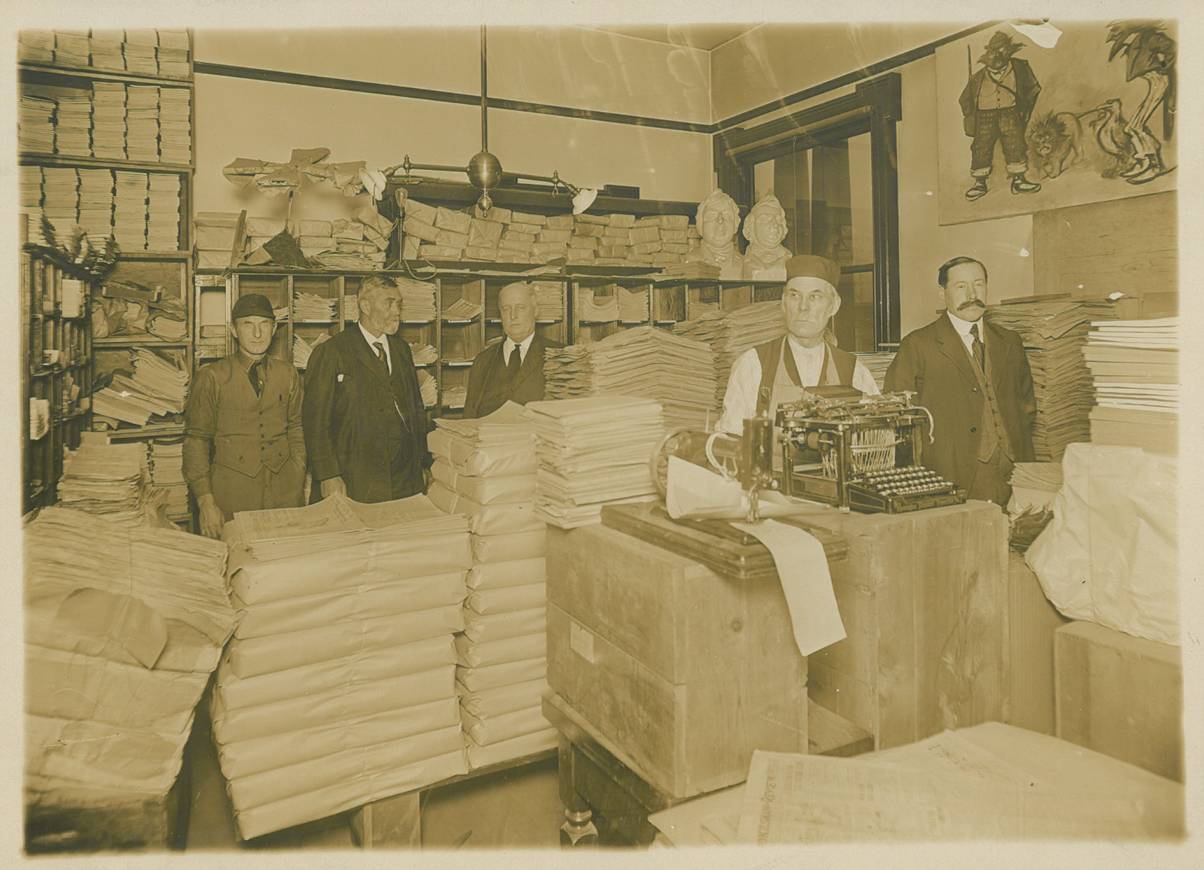Historian, archivist, printer, and journalist George Henry Himes served for over forty years as the assistant secretary and later first curator of the Oregon Historical Society in Portland. "His mind was an index and an encyclopedia of Oregon history," wrote Oregon State Treasurer Leslie M. Scott.
Born near Troy, Pennsylvania, on May 18, 1844, Himes and his family traveled overland from Illinois to the Puget Sound area in 1853. Himes's father, Tyrus, started a farm east of Olympia, Washington, in present-day Lacey, supplementing his income through tanning and harness-making.
In 1861, the seventeen-year-old George Himes became an apprentice to Olympia printer John H. Murphy, publisher of the Washington Standard. They had a stormy and often violent relationship, and Himes left for Portland in March 1864. There he took a job as a typesetter for Henry Pittock, publisher of the Oregonian. In 1865, he went to work for Portland printer William D. Carter. The following year he married Anna Riggs of Eola, with whom he would have eleven children.
In 1868, Himes and a co-worker purchased Carter's shop, and by 1870 he was the sole proprietor. Now called Himes The Printer, the firm published volumes of poetry by Joaquin Miller, the newspaper Commercial Reporter, and Herbert O. Lang's History of the Willamette Valley (1885), which proved a commercial disaster and contributed to the eventual failure of the firm. Although Himes was diligent and hard working, he could barely support his large family.
Himes achieved great noncommercial success, however, in the realms of historical documentation. As a young man, he began a lifelong practice of filling scrapbooks with clippings on historical subjects. In 1873, he helped establish the Oregon Pioneer Association, which he served for many years as secretary, and in 1898 he was one of the founding members of the Oregon Historical Society.
It was in Himes's printing offices that he assembled the first of the Oregon Historical Society's collections. Later, he moved them to Portland's City Hall, then to a storefront on Southwest Second Avenue, and eventually to the Municipal Auditorium Building in 1917.
Himes sold his printing business in 1902 and devoted his time exclusively to the Oregon Historical Society. In 1915, the organization's directors named him curator, a post he held until his death in 1940. Almost single-handedly he built the Society's core collections of books, periodicals, manuscripts, maps, photographs, and artifacts. He also conducted more than 7,000 interviews with Oregon pioneers, and published numerous articles on historical subjects, many related to the history of printing in Oregon. A dedicated diarist, he kept a daily record of his life, beginning at the age of fourteen and continuing until his death at ninety-five.
Himes was a deeply religious man who constantly endeavored to lead what he considered a moral life. He joined the temperance movement at an early age and often taught Sunday school. Prior to his death in 1940, he was the oldest living member of Portland's First Congregational Church.
-
![George H. Himes.]()
Himes, George, bb005796.
George H. Himes. Oreg. Hist. Soc. Research Lib., bb005796
-
Himes, at OHS, OHQ 2-06.
George Himes (right) at Oregon Historical Society, 207 2nd Street, Portland.
Related Entries
-
![Henry Lewis Pittock (1835-1919)]()
Henry Lewis Pittock (1835-1919)
Henry Lewis Pittock, longtime publisher of the Portland Oregonian, was …
-
![Oregon Historical Society]()
Oregon Historical Society
The Oregon Historical Society is a private museum, archival library, an…
-
![The Oregonian]()
The Oregonian
The Oregonian, the oldest newspaper in continuous production west of Sa…
Related Historical Records
Map This on the Oregon History WayFinder
The Oregon History Wayfinder is an interactive map that identifies significant places, people, and events in Oregon history.
Further Reading
Dee, Minnie Roof. From Oxcart to Airplane: A Biography of George H. Himes. Portland, Ore.: Binfords & Mort, 1939.
Laugesen, Amanda. "George Himes, F.G. Young, and the Early Years of the Oregon Historical Society." Oregon Historical Quarterly 101:1 (Spring 2000), 18-39.
Scott, Leslie M. "George Henry Himes, Archivist for Guidance and Posterity." Oregon Historical Quarterly 41:1 (March 1940): 1-3.
Turnbull, George S. "George Himes 38 Years Printer and 37 Years Curator." Oregon Publisher 9 (March 1937): 4-5, 7.





